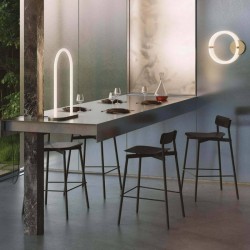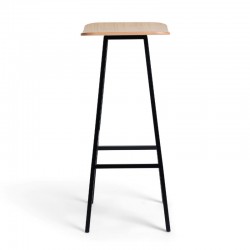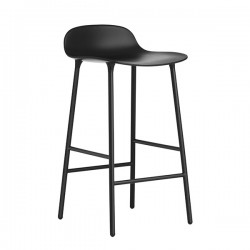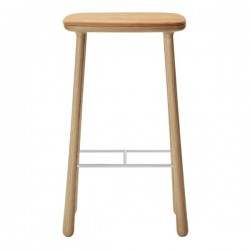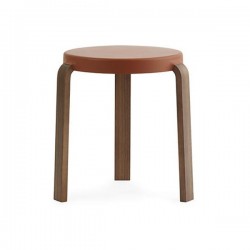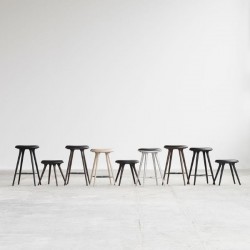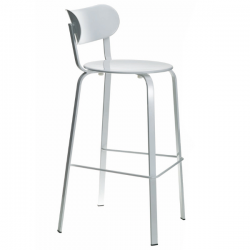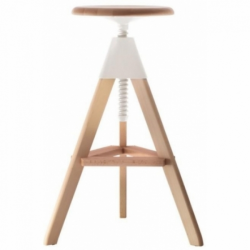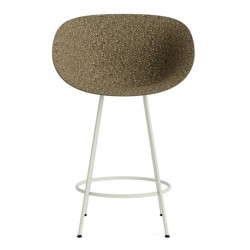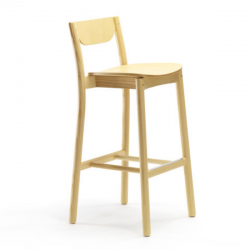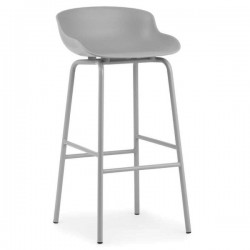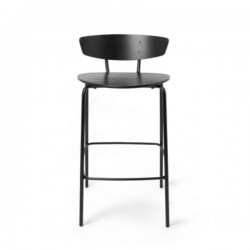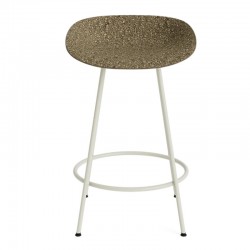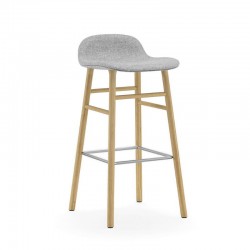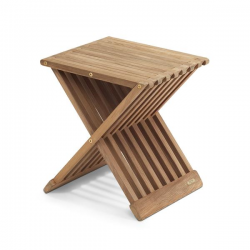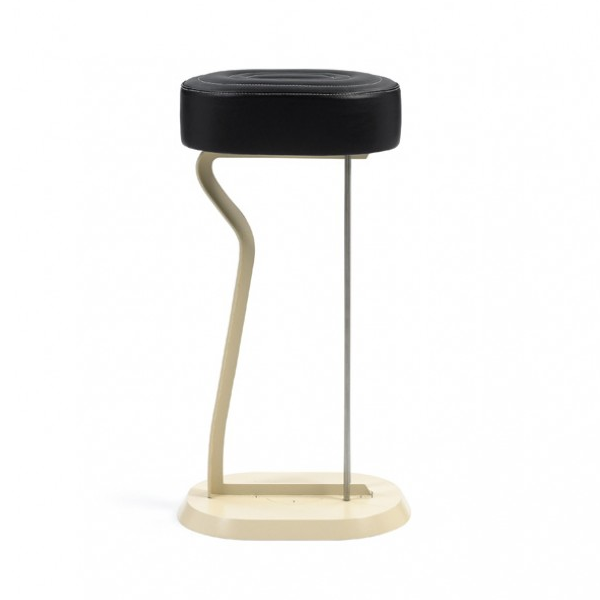Bar Stool No. 2, Eileen Gray 1928
Eileen Gray created not only classical seats such as sofas or chairs, but also a series of unconventional bar stools. Version no. 2, originally designed for the house E 1027, also featured in her Paris apartment in Rue Bonaparte. In her Provencal country home, Tempe a Pailla in Castellar, she used a “Bar Stool” as a nonconformist seat at her drawing desk – another charming example of the versatility of Eileen Gray‘s functional design.
Frame in sectional steel, mounted on a steel base, lacquered in black or cream white. Two brushed stainless steel bars. Upholstery: polyurethane with quilting cotton, cover in leather. Details and colours see price list. Authorised by The World Licence Holder Aram Designs Ltd, London
Can't find it! We can supply all products from Classicon, If you know what you are looking for and it is not yet featured, please send us a request
- Specifications
Stainless steel base, lacquered in black or cream white.
Based polyurethane top coating with polyester fiber.
Leather cover with cotton quilt.- Size Description
Height 74cm
Base 30 x 39cm
Seat 27 x 36cm
-
Eilleen Gray
Eilee Gray was born in Enniscorthy, Ireland, she spent her childhood in London and was among the first women to be admitted to the Slade School of Art where she took up painting in 1898 before undergoing an apprenticeship in a lacquer workshop. She moved to Paris in 1902 where she quickly established herself as one of the leading designers of lacquered screens and decorative panels.<p>During the ‘20s and ‘30s she became one of the leading exponents of the revolutionary new theories of design and construction and worked closely with many of the outstanding figures of the modern movement, including Le Corbusier and JJP Oud. Well to the fore of this group she exhibited chrome, steel tube and glass furniture in 1925 - the same year as Mies van der Rohe and Marcel Breuer and well before Le Corbusier. Her next major contribution to design was in architecture. Encouraged by Le Corbusier and JJP Oud, she designed two houses in the Alpes Maritimes, one at Roquebrune (built 1927-29), the other at Castellar (built 1932-34).</p><p>After the war and up to her death, she continued to work as a designer, on both major projects like the cultural and social centre which occupied her from 1946-47, and on a number of smaller furniture designs. In 1972 she was appointed a Royal Designer to Industry by the Royal Society of Art, London. In 1973 Eileen Gray signed a Worldwide contract with Aram Designs, London, to bring her designs into production for the first time. The Museum of Modern Art added her legendary Adjustable Table E 1027 to its permanent design collection in 1978.</p><p>Eileen Gray Kollektion: Authorised by The World Licence Holder Aram Designs Ltd, London.</p>


 EUR
EUR





